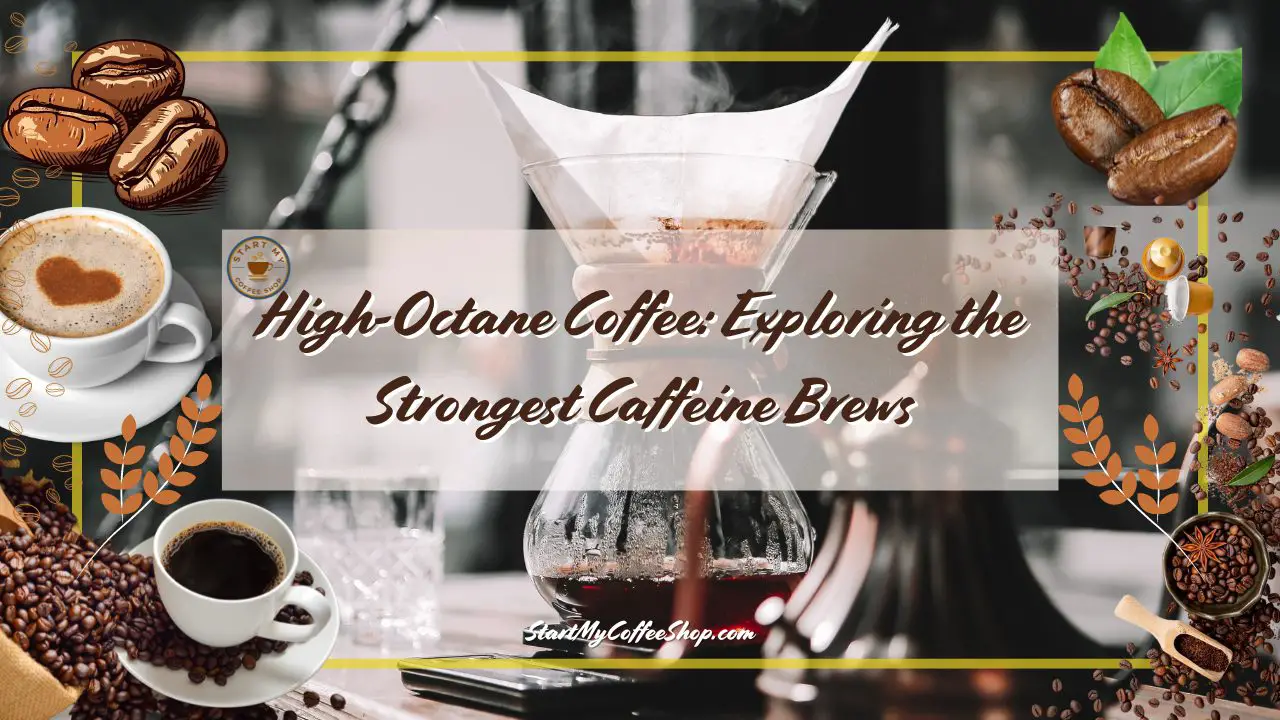Imagine yourself waking up, expecting your first-morning coffee sip with excitement, only to be let down when you taste an unwanted tanginess and sourness. Fear not if this sad situation has ever happened to you! It’s not a pipe dream to get to a cup of coffee that is perfectly balanced and delicious. Even though sour coffee is a widespread problem, it can be readily fixed with a few straightforward changes and a little coffee expertise.
To improve the flavor of your coffee, you should begin the process by experimenting with the grind coarseness, water temperature, and brewing time. Continuously tweak these factors until you discover the precise balance that caters to your taste preferences.
The Role of Grind Coarseness

Coffee bean grind coarseness is an important component that can considerably influence the flavor characteristic of your brew. To properly realize the full potential of your coffee beans, you must first grasp how different brewing processes need different grind sizes. Each method tries to extract the best flavors and aromas from the coffee grounds, and the coarseness of the grind has a direct impact on the extraction process.
A coarse grind is ideal for the French press brewing process. The immersion brewing technique of the French press allows coffee beans to steep in hot water for a longer period. A coarse grind allows the water to stay in contact with the coffee for a longer time, resulting in a more leisurely extraction process. Because of the longer steeping period, the water extracts a variety of aromas, resulting in a powerful, full-bodied cup of coffee with prominent overtones and a smooth texture. The coarser grind size also ensures that fewer fine coffee particles end up in the brew, reducing over-extraction and bitterness.
When it comes to espresso machines, however, a finer grind is favored. Espresso machines use pressure to drive hot water through densely packed coffee grinds, resulting in a concentrated shot of coffee in seconds. The finer the grind, the faster the extraction since the pressured water can travel through the grounds more efficiently. This quick extraction yields a shot with bright flavors, a rich crema, and a robust scent that espresso lovers want.
Experimentation is essential in determining the proper grind coarseness for your coffee. Set your grinder to a medium coarseness, which is a suitable starting point for many brewing processes. Brew a batch of coffee with this setting and taste and smell it attentively. If the coffee feels bitter or too extracted, the grind is too fine. In this situation, try setting the grinder to a coarser setting to minimize the extraction rate and bitterness. If the flavor lacks depth and complexity, it may indicate that the grind is excessively coarse, resulting in under-extraction. In such cases, a finer grind would intensify the extraction process and improve the taste of the coffee.
It’s critical to understand that different coffee bean kinds may have varying grind needs to attain their best flavor profiles. Some beans may require a coarser ground to bring out their greatest qualities, whereas others may shine with a finer grind. Patience and curiosity come into play here as you refine your coffee brewing method. Accept the art of experimentation, and with each brew, take notice of the coarseness of the grind and its effect on the flavor. Over time, you’ll have a better grasp of how to adjust the grind size to suit the distinct characteristics of each coffee you brew.
Read more about: Startup Business Plan Ideas Coffee Shop: Stand Out and Sip
Harnessing Water Temperature
The quality of your morning coffee is impacted by more than just the type of beans you use or the brewing process you utilize. The temperature of the water is an often neglected yet crucial component that can make or break the taste of your coffee. Getting the water temperature just right is a skill that may elevate your coffee experience from mediocre to extraordinary.
The best water temperature for brewing coffee falls within a narrow range: 195°F to 205°F (90°C to 96°C). Within this range, the water removes the soluble components from the coffee grounds, yielding a balanced and tasty cup of joe. If the water is overly hot, well above 205°F, it might sear the fragile coffee beans and release undesired bitter chemicals. As a result, the beans have a strong and disagreeable taste that overpowers the complex flavors that they should have.
Using water that is excessively cold, well below 195°F, on the other hand, will not fully unlock the potential flavors present in the coffee grinds. The extraction process will be incomplete, resulting in a weak and unappealing cup of coffee that will not satisfy your taste buds.
Getting the appropriate water temperature takes some practice. Investing in a high-quality thermometer is critical to ensuring that you regularly strike the mark. you heat your water, whether you use a coffee machine or a kettle, make sure you preheat the equipment first. This step keeps the water from losing too much heat throughout the brewing process, which might harm extraction.
Allow the water to cool slightly once it has been heated to the right temperature before pouring it over the coffee grinds. This modest chilling phase is essential since pouring hot water directly onto the grounds can produce uneven extraction and an imbalanced flavor profile.
It’s also worth mentioning that the appropriate water temperature varies depending on the type of coffee beans used. Coffee bean varietals contain varied taste components that react differently to water temperatures. As a result, it’s critical to be willing to experiment and modify the water temperature based on the exact beans you’re working with. This adaptability and eagerness to experiment will enable you to uncover the sweet spot that matches the distinct flavors of your favorite coffee beans.
Understanding Brewing Time
The art of brewing coffee is a fascinating and intricate process that goes beyond simply combining water and coffee grounds. Among the many variables that play a significant role in determining the final flavor profile of your cup of coffee, brewing time stands out as a critical factor. Understanding the impact of brewing time on the extraction process allows coffee enthusiasts to wield greater control over the taste and characteristics of their brew.
When it comes to brewing time, two distinct styles emerge, each resulting in a unique coffee experience. Shorter brewing times are associated with a lighter-bodied coffee that exhibits more pronounced acidity. In this scenario, water comes into brief contact with the coffee grounds, resulting in a more limited extraction of solubles. The result is a milder flavor profile with brighter and fruitier notes, making it an excellent choice for those who relish a lively and refreshing cup of coffee. This style of brewing is often favored for specific coffee beans, especially those hailing from African regions, where their inherent acidity can be celebrated and showcased.
Conversely, longer brewing times lead to a fuller-bodied cup with heightened bitterness. When water has an extended period to interact with the coffee grounds, it extracts a broader range of compounds, including those responsible for the bitter taste. As a result, the coffee acquires a more robust and intense flavor profile, making it a preferred option for individuals who enjoy a bold and robust cup of coffee. Darker roasts, in particular, benefit from longer brewing times, as it helps to balance the inherent bitterness and emphasize the rich, smoky undertones.
For manual brewing methods like the popular pour-over technique, mastering the art of pouring can significantly influence brewing time. A slow and deliberate pour allows for a longer contact time between water and coffee grounds. As the water gently saturates the grounds, it grants them more time to release their flavors, resulting in a prolonged extraction process and a deeper, more complex taste profile. In contrast, a faster pour reduces the brewing time as the water quickly passes through the coffee grounds, yielding a lighter and less intense cup.
While manual brewing methods offer more direct control over brewing time, many coffee enthusiasts rely on automatic coffee makers for their convenience. However, not having direct control over brewing time does not mean being at the mercy of an automated process. Instead, they can explore other variables to influence the overall brewing process. One such variable is adjusting the grind coarseness. The size of coffee particles affects the surface area exposed to water, which, in turn, impacts how quickly the flavors are extracted. Finer grinds generally lead to faster extraction, while coarser grinds slow it down. By experimenting with different grind sizes, coffee lovers can tailor their brew to suit their taste preferences.
Likewise, the water temperature plays a crucial role in the extraction process. Higher water temperatures tend to expedite extraction, resulting in a bolder cup with more pronounced flavors. Conversely, lower water temperatures produce a more delicate and nuanced brew. Thus, adjusting the water temperature can be a powerful tool to fine-tune the taste of your coffee, even when using automatic coffee makers.
Embrace the Art of Tasting

Enhancing the flavor of your daily cup of coffee is an exciting journey that requires an open mind, a curious palate, and a willingness to learn. To embark on this flavor-seeking adventure, you must become a coffee connoisseur, continuously engaging in taste tests to evaluate the impact of various changes you make in your brewing process. This analytical approach will allow you to refine your techniques and craft a coffee experience that truly resonates with your unique taste preferences.
A vital aspect of refining your coffee brewing skills is to conduct taste tests regularly. By comparing different variables side by side, you can gain valuable insights into how each element influences the final cup. Begin by experimenting with the grind coarseness, as it significantly affects the extraction process. Observe how a finer grind intensifies the flavors, producing a more concentrated and bold taste, while a coarser grind may yield a smoother and milder profile. Make notes of your observations, and keep track of the grind size that best aligns with your taste buds.
Explore the impact of water temperature on your brew. Temperature plays a pivotal role in the extraction process, affecting the balance of flavors in your coffee. By adjusting the water temperature, you can uncover new dimensions of taste. A higher temperature might bring out bolder and more pronounced flavors, while a lower temperature might enhance delicate and nuanced notes. Tasting the differences side by side will help you identify the perfect temperature range that suits your preferences.
As you conduct taste tests, it’s essential to develop a vocabulary for describing the flavors you experience. This language of flavors will enable you to articulate and communicate your coffee preferences better. Words such as fruity, nutty, floral, chocolatey, caramel-like, and spicy can help convey the nuances you perceive in your coffee. This vocabulary will not only enhance your ability to describe your coffee experiences but also deepen your appreciation for the complexity of coffee’s flavors.
Remember that taste is a subjective experience, and everyone’s palate is unique. What works wonders for one person may not resonate with another. Embrace this diversity and stay attuned to your taste buds. Trust your instincts and allow your preferences to guide your coffee brewing journey. Your perfect cup of coffee may differ from someone else’s, and that is perfectly alright.
Be fearless in your pursuit of the perfect brew and don’t shy away from experimenting with new techniques and methods. Embrace the unknown and explore uncharted territories in the world of coffee. Every discovery, even if it leads to unexpected outcomes, contributes to your growth as a coffee aficionado.
Read more about: Startup Coffee Shop Business Plan: Things To Know
Frequently Asked Questions
How does the coarseness of the coffee grind affect the flavor?
The coarseness of the grind has a considerable impact on the flavor of your coffee. To obtain the appropriate flavor profile, different brewing methods, such as French press, espresso, or pour-over, require different grind sizes. A coarser grind allows for a longer extraction period, resulting in a more richly flavored, full-bodied cup with less acidity. A finer grind, on the other hand, encourages faster extraction, accentuating the bean’s strong flavors and aroma. Experimenting with grind coarseness allows you to adjust your coffee brewing to your tastes and the characteristics of the coffee beans.
What is the appropriate temperature of water for brewing coffee?
For brewing coffee, the optimal water temperature is from 195°F to 205°F (90°C to 96°C). Water at this temperature range guarantees that the coffee grounds are properly extracted, resulting in a well-balanced and tasty cup of coffee. If the water is excessively hot, the coffee will be over-extracted, resulting in a bitter taste. However, if the water is too cold, the coffee will taste weak and uninspiring. Purchasing a decent thermometer and preheating your coffee machine or kettle will assist you in achieving the ideal water temperature for a consistently outstanding cup of coffee.
How can I figure out the ideal brewing time for my coffee?
Brewing time is important for coffee extraction and taste development. Shorter brewing durations result in a lighter-bodied cup with more acidity, whilst longer brewing times result in a fuller-bodied cup with more bitterness. Depending on your coffee brewing method and personal taste preferences, the recommended brewing time may vary. Experiment with different grind coarseness, water temperature, and pouring speeds (for pour-over methods) to achieve the optimum balance. Conduct taste tests regularly to examine the influence of different brewing times and develop your approach until you obtain the desired flavor profile.
To learn more on how to start your own coffee shop, check out my startup documents here.
Disclaimer: The information provided by StartMyCoffeeShop.com (“The Site”) is for general informational purposes only. All information on the Site is provided in good faith. However, we make no representation or warranty of any kind, express or implied, regarding the accuracy, adequacy, validity, reliability, availability, or completeness of any information on the Site. Under no circumstance shall we have any liability to you for any loss or damage of any kind incurred as a result of the use of the Site or Reliance on any information provided on the Site. Your use of the Site and reliance on any information on the Site is solely at your own risk. This blog post is for educational purposes only and does not constitute legal advice. Please consult a legal expert to address your specific needs. Terms and Conditions. (https://startmycoffeeshop.com/terms-and-conditions/)

Hi! I’m Shawn Chun
My adventure in coffee began when I first launched my first coffee shop back in the early 2000s. I had to figure out so many things on my own and to make it worse within 2 years of opening two large corporate coffee chains moved in just blocks away from me!
As I saw smaller and even some larger coffee shops in the neighborhood slowly lose customers to these giant coffee chains and slowly close up shop, I knew that I had to start getting creative…or go out of business.
I (like you may be) knew the coffee industry well. I could make the best latte art around and the foam on my caps was the fluffiest you have ever seen. I even had the best state-of-the-art 2 group digital Nuova Simonelli machine money could buy. But I knew that these things alone would not be enough to lure customers away from the name brand established coffee shops.
Eventually, through lots of trial and error as well as perseverance and creativity I did find a way to not only survive but also thrive in the coffee/espresso industry even while those corporate coffee chains stayed put. During those years I learned to adapt and always faced new challenges. It was not always easy, however, in the end, I was the sole survivor independent coffee shop within a 10-mile radius of my location. Just two corporate coffee chains and I were left after that year. All told the corporate coffee chains took down over 15 small independent coffee shops and kiosks and I was the last one standing and thriving.
Along the years I meet others with the same passion for coffee and I quickly learned that it is not only “how good a barista is” that makes a coffee shop successful, but the business side of coffee as well.
Hence why I started this website you are on now. To provide the tools and resources for up and coming coffee shop owners to gain that vital insight and knowledge on how to start a coffee shop successfully.
Stick around, browse through my helpful blog and resources and enjoy your stay! With lots of LATTE LOVE!
Shawn






